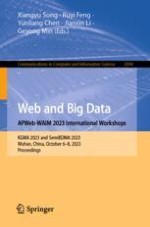2024 | Buch
Web and Big Data. APWeb-WAIM 2023 International Workshops
KGMA 2023 and SemiBDMA 2023, Wuhan, China, October 6–8, 2023, Proceedings
herausgegeben von: Xiangyu Song, Ruyi Feng, Yunliang Chen, Jianxin Li, Geyong Min
Verlag: Springer Nature Singapore
Buchreihe : Communications in Computer and Information Science
